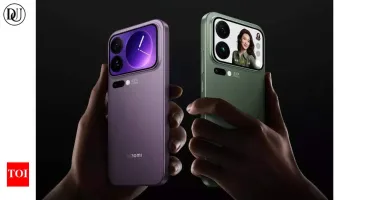Hideo Kojima’s long-awaited sequel, Death Stranding 2: On the Beach, has finally arrived — and it’s as ambitious, perplexing, and visually stunning as fans hoped. Released exclusively on PlayStation 5, the game expands on the haunting post-apocalyptic world introduced in the original, while pushing narrative and gameplay in new directions that only Kojima could dream up.
Starring Norman Reedus once again as Sam Porter Bridges, the sequel revisits familiar themes of connection, isolation, and rebuilding. But this time, the stakes are higher and the emotional depth more intense, making death stranding 2 a uniquely affecting gaming experience.
![]()
Story: Human, Heartbreaking, and Surreal
The story picks up after the events of the first game, with the world still recovering from the mysterious "Death Stranding" phenomenon. Sam is tasked with a new mission across an expanded map filled with harsher environments and stranger encounters. Themes of memory, sacrifice, and identity are central, creating a story that’s as philosophical as it is personal.
One of the biggest strengths of death stranding 2 is its refusal to rush. The game leans heavily into long cinematic sequences, character development, and slow-burn storytelling. Some may find this pacing tedious, but for Kojima fans, it’s another example of his unmatched vision for immersive, narrative-driven gaming.
Gameplay Evolves with New Mechanics
While the original game was often reduced to "walking simulator" memes, the sequel adds new gameplay systems that make exploration more dynamic. Vehicles are more versatile, weather affects navigation, and encounters with enemies (both human and spectral) are more strategic.
The introduction of cooperative building mechanics allows players to collaborate indirectly in building paths and shelters — an extension of the connection motif from the first game. The terrain is more unpredictable, and missions now include more choices and consequences, helping death stranding 2 feel both familiar and fresh.
Visuals and Audio: A Cinematic Benchmark
Death Stranding 2 is a visual masterpiece. Environments are richly detailed — from desolate coastlines to glowing forests — and the motion capture performances by Norman Reedus, Léa Seydoux, and Troy Baker are lifelike and deeply emotional. The game’s lighting, weather effects, and overall art direction raise the bar for what’s possible in cinematic gaming.
![]()
The score, once again curated by Ludvig Forssell, is haunting and beautiful. Music cues hit perfectly during story beats and exploration, adding emotional weight that few games achieve.
Final Thoughts: An Experience Like No Other
Death Stranding 2 won’t be for everyone. Its slow pace, heavy themes, and abstract storytelling might alienate players looking for instant gratification. But for those willing to immerse themselves, this is one of the most original and heartfelt gaming experiences of the year.
Kojima has crafted another piece of interactive art that challenges the definition of what a game can be. Whether or not you loved the original, death stranding 2 demands attention and delivers a journey you won’t forget.










